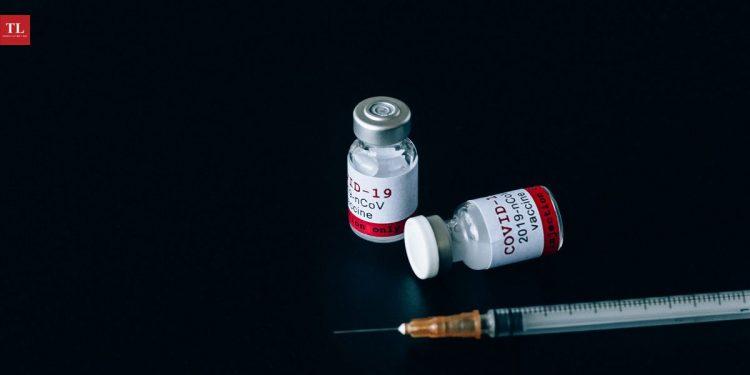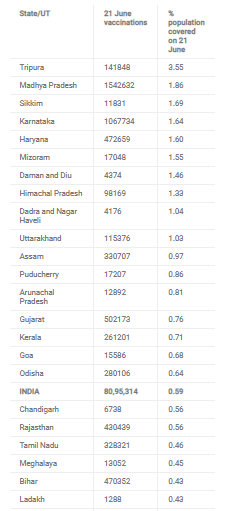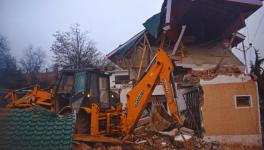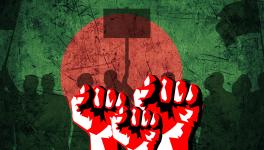Getting Vaccinated Against Covid-19 – Access Issues and Discrimination

Through analysis of the state-wise COVID data from June 21, RAVI DUGGAL demonstrates that non-BJP-ruled states were discriminated against in vaccine supplies in relation to BJP-ruled states. Then, through his personal experience of getting vaccinated on June 21, he illustrates how complicated the vaccination process is, and why it may be excluding the poor and the digitally challenged.
—–
June 21 is a significant day. It marks the summer solstice in the Northern Hemisphere and winter solstice in the Southern Hemisphere. It is now also the International Yoga Day. But this year, it became even more significant: on June 21, India administered COVID vaccines to nearly 8.1 million people across the country, making it the highest number vaccinated on a single day since the onset of our COVID vaccination drive. I, too, got my first jab of the Covishield vaccine on this day.
The Press Information Bureau released vaccination data for June 21 for all states at 9 pm. This is certainly a noteworthy achievement, but can it be sustained given the current production rate for the vaccines and supply chain issues? For instance, on June 22, the total vaccines administered dropped drastically to 5.2 million jabs, and only a week later, the vaccination rate dropped by 68 percent.
Discrimination Against non-BJP states
A quick look at the data from June 21 indicates clear discrimination across states in rolling out vaccinations against COVID-19. I took the data and calculated the vaccines administered in each state as a proportion of the states’ respective populations, and reorganised the states in descending order.
What came out sharply is that the top half of the states were almost entirely states which were under Bharatiya Janta Party (BJP)/National Democratic Alliance (NDA) rule (Table 1 and Graph 1). Many of these states are certainly not the most populous, nor do they have high prevalence of COVID-19. The states at the bottom half are predominantly the non-BJP ruled states, though they do include Uttar Pradesh and Bihar; many of them are high COVID-prevalence states.
Table 1: Vaccinations administered on June 21 across states/Union Territories (UTs)


Graph 1: Percentage of state population vaccinated on 21st June 2021
Also read: Political economy of COVID-19 Vaccine shortages in India
So is this pattern a consequence of discrimination against non-BJP ruled states by curtailing vaccine supplies, which affected the roll out of vaccines in these state? On the face of it, it appears so even when we look at absolute figures of vaccinated numbers, and gets evident when we calculate percentages across states.
The correct answer primarily lies in state-wise supply of vaccines, for which figures are hard to come by. We have seen huge fluctuations and disruptions in vaccine supply over the last two months, which is why states are unable to consolidate a regular schedule to facilitate those seeking to get vaccinated. Some non-BJP ruled state governments have even voiced concerns over the past few months that they are being discriminated against in vaccine supplies by the Union government. Now, with vaccines being opened up to the private health sector, the supply of vaccines to public health facilities is going to get further constrained. This, in turn, would lead to another level of discrimination in access to vaccines based on socio-economic class.
Access Issues
Given the erratic and unpredictable vaccine supply to states, getting access to the vaccine has been a struggle for most people, especially the poor and the digitally challenged. I provide my own personal example to illustrate this point.
I live on the outskirts of Mumbai, and registered on the CoWIN website in early April. Since then, I have been trying to obtain a slot for vaccination, but because schedule announcements and opening up of slots has been rare and erratic due to the paucity of vaccines in Maharashtra, I was unable to get a slot until June 21. On that day, suddenly there was a huge availability of the same within my municipal area of Mira-Bhayander, which has a population of 1.8 million.
Getting a vaccination slot has been like a game of fastest finger first, and even someone like me, with good digital access, had difficulty with capturing a slot. Spare a thought, then, for the poor and the digitally challenged.
My vaccination experience
My vaccination centre was a school and the team providing the vaccination was from the local municipal corporation. Since the school had sufficient open space, social distancing was well maintained at the centre, and it took us one and a half hours, including the 30 minute observation time, to get vaccinated.
In the waiting area as well as at the registration desk, there were many people who would walk in to get the jab as they were digitally challenged and had not registered themselves online. While they were refused vaccination, they were asked to go to the health centre close by, request for help with registration, and then come again some other day.
As regards the vaccination process, while the staff appeared competent, they faced various handicaps, the biggest being at the registration desk. The staff had issues in confirming our registrations on their apps – the confirmation SMS did not come through, and this delayed the process.
The staff at the desk informed us that they were using their personal cell phone, and had erratic connectivity. That was surprising. Desktops or laptops should have been provided to the staff with LAN connections so that the process was smoother.
Eventually, even though the confirmation SMS did not arrive, we were told to go to the vaccination room. Here, the nurses were ready with the jabs. They already had the syringes loaded, which I found problematic, since this could potentially compromise the cold chain and adversely affect the efficacy of the vaccine. When I asked the nurses about this, they said this was done to hasten the process so that people don’t wait in the vaccination area for too long.
After we got the shot, we were asked to go to the observation room to wait for 20 minutes where each of us was given two tablets of paracetamol to be taken at night.
Even after leaving, I did not receive any confirmation SMS on my cell phone, and my registration status on the CoWIN website still displayed ‘not vaccinated’. When I confronted the registration desk, they requested me to go to the nearby health centre for resolution of the issue.
The clerk at the health centre was nice but it took him about 20 minutes to sort this out before my status reflected correctly as ‘vaccinated with first dose’ and we immediately got the provisional certificate. All in all, quite an effort to get access to the vaccine.
Friends in Kerala tell me that once they registered on the CoWIN website, the local health worker would call them and offer a date and time slot for the jab, and that was it. In the good old pre-digital days whether it was the smallpox or the polio vaccine, or any other vaccine, for that matter, we would get it at school, the local health centre or even at home from the outreach health workers.
Why has the COVID-19 vaccine process been made so complicated?
(Ravi Duggal is a sociologist, health researcher and activist associated with the Peoples Health Movement. The views expressed are personal.)
Get the latest reports & analysis with people's perspective on Protests, movements & deep analytical videos, discussions of the current affairs in your Telegram app. Subscribe to NewsClick's Telegram channel & get Real-Time updates on stories, as they get published on our website.
























